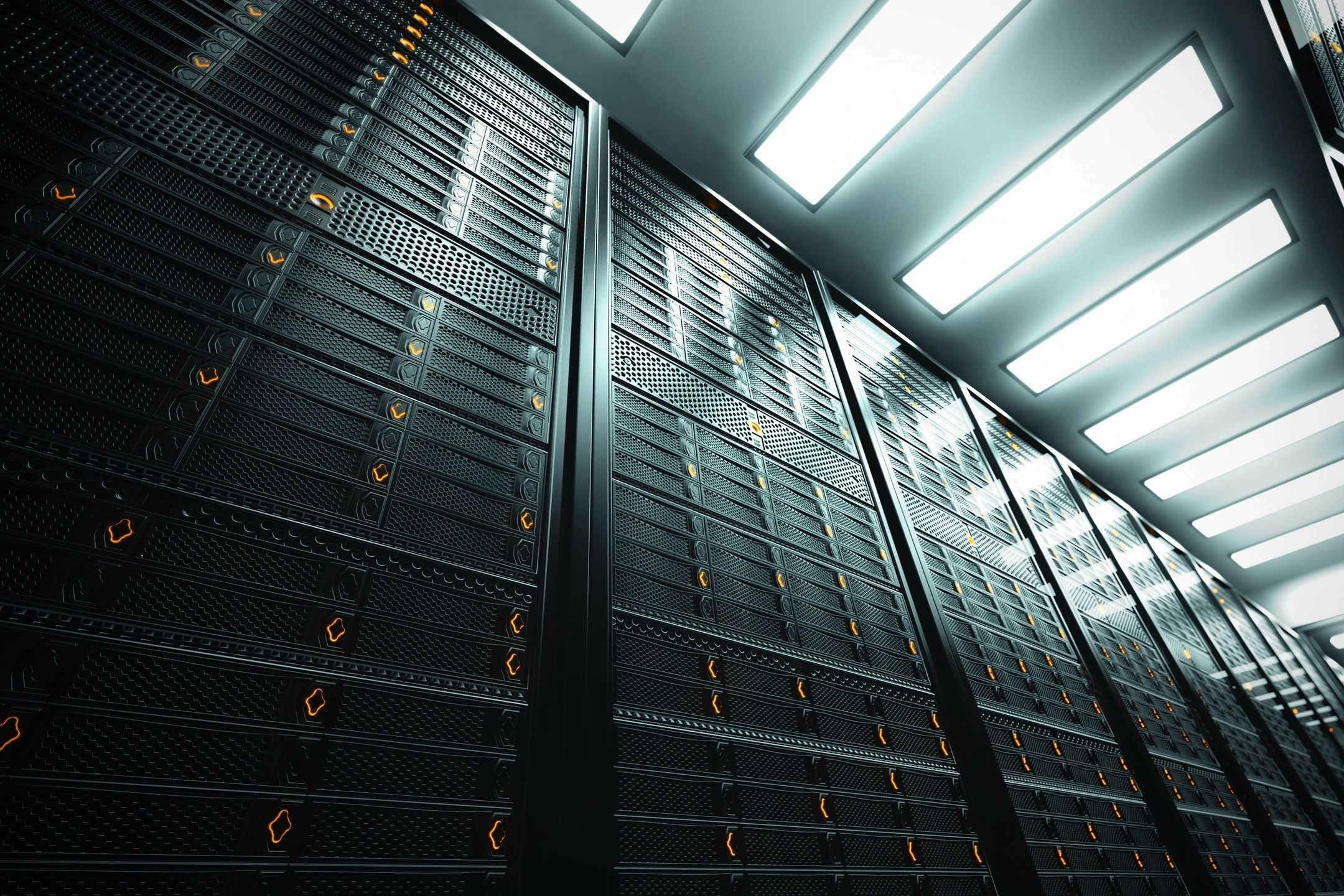As a business owner, you understand the importance of staying ahead in a competitive market. One key aspect that can give you a significant advantage is having a clear understanding of IT infrastructure. From hardware and software to networks and data centers, a strong foundation in IT infrastructure can empower you to make strategic decisions that drive growth and efficiency. Join us as we unravel the complexities of IT infrastructure and equip you with the knowledge to harness its full potential.
What is IT Infrastructure?
IT infrastructure refers to the underlying foundation of hardware, software, networks, and facilities that enable the functioning of an organization’s information technology systems. It encompasses everything from servers and data centers to routers and software applications. Essentially, IT infrastructure is the backbone that supports the flow of data, communication, and operations within a business. Understanding the components and architecture of IT infrastructure is crucial for business owners to make informed decisions about technology investments and ensure the smooth functioning of their operations.
Why is IT Infrastructure Important?
IT infrastructure plays a vital role in the success and efficiency of modern businesses. It provides the necessary framework for storing, processing, and transmitting data, facilitating seamless communication and collaboration among employees, and enabling the deployment of various software applications and services. A robust and well-maintained IT infrastructure enhances productivity, streamlines business and enterprise processes, and improves customer experiences. Moreover, it enables businesses to adapt to technological advancements, scale their operations, and stay competitive in today’s digital landscape. In short, investing in a reliable and efficient IT infrastructure is essential for a company to thrive in the modern era.
What Components Make Up IT Infrastructure?
IT infrastructure refers to the set of components and systems that are necessary for the efficient and effective operation of an organization’s technology environment. It encompasses hardware, software, networks, data centers, and personnel. Here are the key components that make IT infrastructure:
Hardware
This includes physical devices such as servers, computers, laptops, storage devices, routers, switches, and peripherals like printers, scanners, and monitors. Hardware is the tangible infrastructure that enables the processing, storage, and transmission of data.
Software
Software refers to the programs, applications, and operating systems that run on the hardware. It includes both system software (such as operating systems, device drivers, and utility programs) and application software (such as word processors, spreadsheets, and customer relationship management software).
Networks
Connected networks on different devices and systems within an organization enable data transfer and communication. This includes local area networks (LANs), wide area networks (WANs), routers, switches, firewalls, and wireless access points. Networks can be wired or wireless and are essential for sharing information and resources.
Data Centers
Data centers are facilities that house servers, storage devices, networking equipment, and other components required to store, manage, and process large amounts of data. They provide a secure and controlled environment for storing and accessing data and may include features such as backup power supply, cooling systems, and security measures.
Security
IT infrastructure must incorporate security measures to protect against unauthorized access, data breaches, and other cybersecurity threats. This includes implementing firewalls, antivirus software, encryption protocols, access controls, and regular security audits to ensure the integrity and confidentiality of data.
Cloud Services
With the rise of cloud computing, IT infrastructure now often includes cloud services. These services provide on-demand access to computing resources, storage, and applications over the internet. Cloud services offer scalability, flexibility, and cost-efficiency, allowing organizations to leverage external infrastructure for their computing needs.
Personnel
IT infrastructure also relies on skilled personnel who manage, maintain, and support the various components. This includes IT administrators, network engineers, system administrators, cybersecurity experts, and help desk technicians. These professionals ensure the smooth operation, troubleshooting, and optimization of the IT infrastructure.
Policies and Procedures
Policies and procedures that control its use, security, and maintenance support IT infrastructure. This includes establishing guidelines for data backup and recovery, software updates, user access controls, and incident response protocols. Policies and procedures help maintain the integrity, reliability, and compliance of the IT infrastructure.
By understanding and effectively managing these components, organizations can build a robust and reliable IT infrastructure that supports their operations, enhances productivity, and enables growth in the digital age.
What is the Difference Between Physical and Virtual IT Infrastructure?
Physical IT infrastructure refers to the traditional setup of hardware and equipment that is physically present in an organization’s premises. This includes servers, networking devices, storage devices, and other physical components that are necessary to support the organization’s IT needs. Physical infrastructure often requires dedicated physical space, power supply, cooling systems, and regular maintenance.
On the other hand, virtual IT infrastructure refers to a cloud-based setup where the hardware and equipment are hosted and managed by a third-party provider. Instead of having physical servers and networking devices, virtual infrastructure utilizes virtual machines, virtual storage, and virtual networks. These resources are accessed remotely over the internet, eliminating the need for on-premises hardware.
How Does IT Infrastructure Impact Cybersecurity
IT infrastructure plays a critical role in cybersecurity as it provides the foundation for implementing and maintaining security measures to protect an organization’s digital assets. Here are some ways in which IT infrastructure impacts cybersecurity:
- Network Security: IT infrastructure includes networks that connect devices and systems within an organization. Implementing robust network security measures, such as firewalls, intrusion detection systems, and secure network protocols, is essential to prevent unauthorized access, data breaches, and other network-based attacks.
- Data Protection: IT infrastructure encompasses data centers where sensitive information is stored and processed. Implementing encryption, access controls, and backup systems within the infrastructure helps protect data from unauthorized access, loss, or corruption. Additionally, data centers should have physical security measures in place to prevent physical breaches.
- Endpoint Security: Endpoints, such as computers, laptops, and mobile devices, are integral parts of IT infrastructure. Securing these endpoints with antivirus software, endpoint protection platforms, and regular security updates is crucial to prevent malware infections, data theft, and other endpoint-related security incidents.
- Security Monitoring and Incident Response: IT infrastructure should include security monitoring tools and systems that continuously monitor network traffic, log files, and system activities for any signs of suspicious or malicious activities. This allows for early detection and timely response to security incidents, minimizing the impact of potential breaches.
- User Access Controls: IT infrastructure should implement strong user access controls, such as multi-factor authentication, role-based access control, and least privilege principles. These measures ensure that only authorized individuals have access to sensitive data and systems, reducing the risk of insider threats and unauthorized access.
- Patch Management: IT infrastructure should have processes in place to regularly update and patch software, operating systems, and firmware. Keeping systems up to date with the latest security patches helps address vulnerabilities and protect against known exploits.
- Employee Awareness and Training: IT infrastructure should support employee cybersecurity awareness and training programs. Educating employees about best practices, such as recognizing phishing emails, using strong passwords, and avoiding suspicious websites, helps create a security-conscious culture and reduces the likelihood of human error-related security incidents.
By having a secure and well-maintained IT infrastructure, organizations can significantly enhance their cybersecurity posture, mitigate risks, and protect their valuable data and systems from cyber threats.
3 Main Reasons Businesses Need IT Infrastructure
Efficient Operations and Productivity
- Implementing a robust IT infrastructure is crucial for efficient operations and productivity.
- The right hardware, software, and network systems streamline processes and automate tasks.
- IT infrastructure enables seamless collaboration and effective communication, regardless of location.
- Leveraging technology optimizes workflows, reduces errors, and enhances productivity.
- A well-designed IT infrastructure supports efficiency across various departments.
Data Management and Security
- Effective data management and security are crucial in today’s data-driven business landscape.
- IT infrastructure provides the foundation for storing, managing, and protecting valuable business data.
- Proper data centers, backup systems, and security measures ensure the integrity, confidentiality, and availability of data.
- IT infrastructure enables data encryption, access controls, and regular backups to safeguard against breaches, loss, or corruption.
- Robust data management and security practices help build customer trust, ensure regulatory compliance, and mitigate risks associated with data breaches.
Scalability and Business Growth
- IT infrastructure is essential for enabling scalability and supporting business growth.
- A well-designed IT infrastructure allows for easy scalability as businesses expand.
- It can accommodate increased workloads, additional users, and expanding operations.
- Cloud services provide businesses with the flexibility to scale their computing resources on demand.
- Leveraging a scalable IT infrastructure helps businesses adapt to changing market demands.
- It enables businesses to seize new opportunities and remain competitive in a rapidly evolving business landscape.
Conclusion
In conclusion, understanding and investing in a robust IT infrastructure is essential for businesses in today’s digital landscape. The components of IT infrastructure, including hardware, software, networks, data centers, and personnel, form the foundation for efficient operations, productivity, and growth. By leveraging the power of technology, businesses can streamline processes, enhance communication and collaboration, and protect their valuable data. Furthermore, a well-designed IT infrastructure enables scalability, adaptability, and the ability to leverage cloud services. As businesses continue to navigate the ever-evolving technological landscape, prioritizing and optimizing their IT infrastructure will be crucial for staying competitive, ensuring data security, and driving success in the digital era.
Final Thoughts
Secure Your Business with Buzz Cybersecurity. Safeguarding your business from cyber threats is our top priority at Buzz Cybersecurity. With our comprehensive range of services, including managed IT services, cloud solutions, disaster recovery, and ransomware protection, we offer a complete cybersecurity solution. What makes us stand out is our dedication to exceeding expectations and delivering top-notch cybersecurity solutions. Businesses in neighboring states trust us for their security needs, and we are proud to provide unmatched protection. Join forces with Buzz Cybersecurity and ensure the highest level of security for your business.
Sources
- https://minutedock.com/academy/5-types-of-software-every-business-needs
- https://www.techadvisory.org/2014/05/essential-hardware-for-your-business/
- https://aws.amazon.com/compare/the-difference-between-lan-and-wan/
- https://www.ibm.com/topics/data-centers
- https://www.techopedia.com/definition/30459/virtual-infrastructure
- https://en.wikipedia.org/wiki/Endpoint_security



